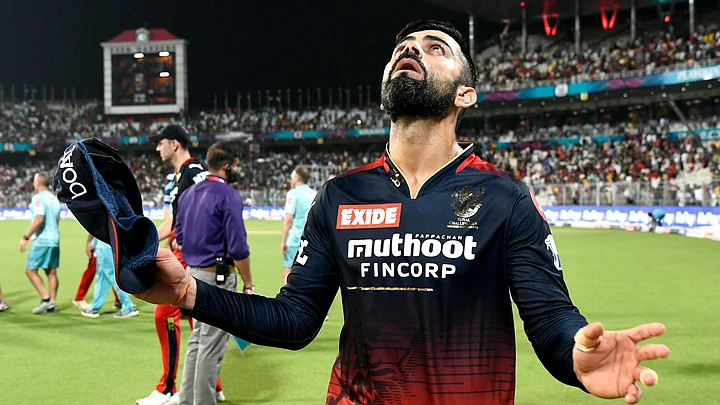Taking a cue from the Big Bash League's 'X-Factor Player', the Board of Control for Cricket in India has decided to introduce the concept of tactical substitutes in their upcoming domestic T20 competition, the Syed Mushtaq Ali Trophy. If successful, the substitute system would become a part of the Indian Premier League 2023.
Like football, rugby, basketball, or any other team sport, the rule will allow the teams to play a cricketer from the bench as an 'Impact Player' in exchange for a Playing XI member. The recently introduced concept is a game changer compared to the previous systems because of its greater tactical flexibility.
The rule is a revamped version of the International Cricket Council's defunct Supersub system used in the 2005-06 ODIs. The teams winning the toss always had an advantage in those times, resulting in the experiment's loss of support. For instance, since the teams had to name their Supersub before the toss, a bowling pitch meant both sides would pick a batter as their Supersub. While the bowling team which won the toss would have the luxury of playing an extra bowler to replace the player with a batting Supersub in the second innings, the team bowling second would miss the service of a mainstay bowler as it had already picked a batting Supersub. Likewise, on a belter of a pitch, the team batting second would miss an extra batter as both the teams would select a bowler as their Supersub.
What is an 'Impact Player'?
Cut to the present scenario, the 'Impact Player' rule requires the teams to name their Playing XI along with the four substitutes during the toss. The 'Impact Player' can be selected from a pool of four substitutes. A group of cricketers with varied skill sets to choose from can reduce the effect of the toss. It's more exciting as it opens a new dimension of permutations and combinations, allowing the teams to select horses for courses according to the match situation.
It's riveting to see a football manager being able to substitute a defender for an attacker in the final minutes of a match that his team is losing, to try and force a result. Cricket fans have always yearned for these intricacies and nuances in their beloved game, but in a game already filled with complexities, there's always a fear that any changes would further complicate things. Imagine a game having "bowling wicket to wicket" and "bowling on that wicket" two different connotations! Ideally, it would have been better if the teams were allowed to name the XI and the substitutes after the toss, but this innovative rule from the BCCI is a welcome change.
With no real restrictions on the role a cricketer can play, Powerplay specialists like Bhuvneshwar Kumar can bowl upfront, without needing to bowl at the death, which isn't his forte. Strategically, a team can finish a full quota of overs before the slog overs in a T20 game and replace him with an 'Impact Player' who's a death-over specialist. That's like getting the best of both worlds.
Changes Not Easy as They Irk Traditionalists
Such hallowed are the rules of cricket that any tweaks to them don't receive easy public approval. Even something as integral as the Decision Review System (DRS) in today's game had received a lot of backlash during its initial days.
Tactical innovations have been a part of the T20 format, including the Indian Premier League. Ex-Kolkata Knight Riders captain Eoin Morgan and analyst Nathan Leamon, also the co-founder of popular statistical platform Cricviz, used coded signals written in bold letters to communicate cryptic strategies from the dressing room in the 2021 IPL. The duo was lambasted by the self-proclaimed custodians of the "Spirit of Cricket" for violating its vague norms.
The Morgan-Leamon duo first used the coded-signal tactic when the England Cricket Team played a T20I series against South Africa in 2020. Since then, the tactical ploy has gained wide acceptance in the cricketing fraternity. In the recently concluded Asia Cup, the triumphant Sri Lankan team used this method as a part of their strategy.
The American football league NFL arguably possesses the most active coach-player communication model during a match. The quarterback plays the role of a playmaker on the field with the help of real-time messages provided by the coaches and attack coordinators. So swift is the communication, that the quarterback can make an instant call to hoodwink the defence in certain situations. Another successful example is Motorsports like Formula One, which resorts to real-time communication between the dugout and the driver. Moreover, what is unlawful or unsporting in doing the same thing in cricket which doesn't bar coaches from communicating with the on-field captains (as they often do it from the boundary line or send the 12th man during drinks breaks)? The coded-signal tactic is a catalyst in speeding the already present coach-player communication model during a cricket match, making it more effective.
There's no better place than the IPL to test the innovative 'Impact Player' rule, as the tournament visibly dictates the course of the international calendar. T20 cricket came onto the scene to make the game fast-paced, exciting, and less time-consuming. We are at a time when there's every possibility that the cricket calendar will take the franchise route like football.
With T20 cricket leading the way for franchise cricket, it's impossible to look away from tactical innovations like the 'Impact Player' or the coded-signal ploy used in the IPL. Introducing the new substitute system in the upcoming SMAT is the right way forward.
(At The Quint, we question everything. Play an active role in shaping our journalism by becoming a member today.)
